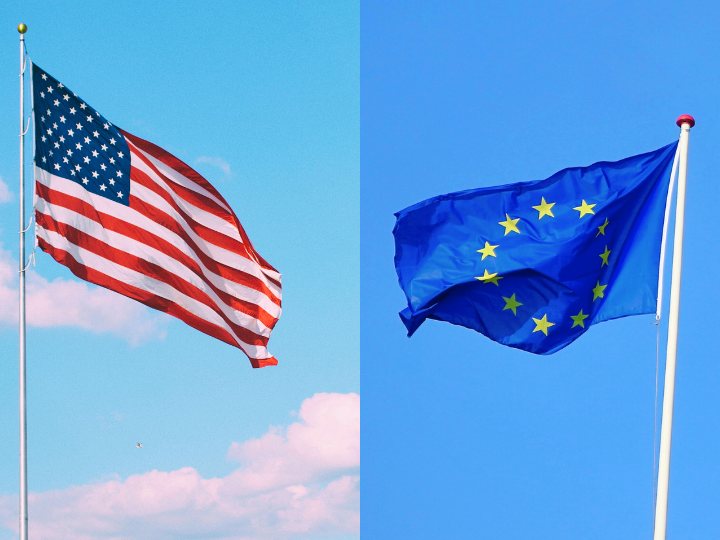by Janos Allenbach-Ammann
The EU often compares itself to the US, with European industry players using the EU’s apparent economic underperformance as an argument for business-friendly regulations, but such comparisons can also lead to misguided conclusions.
The European Round Table for Industry (ERT) sounded the alarm in a paper published on Thursday (26 October), lamenting the decline of European industry compared to its global peers.
It based its analysis mainly on a comparison with the US, with ERT chairman Jean-Francois van Boxmeer warning that Europe might become “a super nice museum” instead of a thriving economy.
One of the comparisons the ERT paper makes is the development of GDP per capita measured in current USD. This figure grew only marginally over the past ten years in the EU while it skyrocketed in the US.
However, as Bruegel’s Zsolt Darvas pointed out in a recent analysis, this figure is highly influenced by exchange rate fluctuations. “The indicator, GDP in US dollars, is useful for measuring economic output at a point in time, but not for evaluating relative time trends,” he wrote.
Indeed, in 2012, one could get around 1.28 USD per euro while in 2022, this decreased to 1.05 USD per euro.
Darvas argued that a proper comparison over time would look at GDP per capita at purchasing power parity (PPP), which eliminates exchange rate fluctuations. And looked at from this perspective, the EU increased very slightly its relative performance relative to the US.
However, to be fair to the ERT, exchange rates are not entirely negligible as they can also be a sign of an economy’s strength or weakness.
While the US became energy independent over the past decade, the EU made itself dependent on foreign energy providers. Consequently, when the price shock hit before and during the Russian invasion of Ukraine, the EU had to spend a lot of euros to buy energy, thus weakening the euro.
So, a lesson to learn from the US would be that energy independence is a good thing to have.
Darvas’ figures also show that most of the European growth that was observable over the past decades happened in Central and Eastern Europe, where countries had a lot of catching up to do.
Western Europe stagnated and Southern Europe declined compared to the US economic development when measured at GDP per capita PPP. This points to a common theme of European macroeconomic analysis: the catastrophe of austerity policies.
According to the US policy blogger Matthew Yglesias, one of the major differences between the EU and the US in the past decade and a half was that the US had better macroeconomic policies that were more growth-friendly and less scared of public debt.
The other two main drivers of US economic supremacy he mentions are energy independence (which in the US means fracking) and a deeper capital market that provides funding for venture capital.
The ERT, meanwhile, calls for more investments into the electricity grid along with a truly integrated energy market and also argues for a capital markets union to get more private capital to fund innovative firms.
Remarkably, however, the European industry remains silent on macroeconomic governance even though it seems to be an obvious lever for economic growth.
Instead, the ERT laments that profit margins are much higher in the US than in the EU, where restrictive regulations and competition rules can hamper large profits.
The ERT is right to point out that large profits would naturally attract more capital, but policymakers should remember that large profits are often a sign of market failure. Persistently high profit margins mean that shareholders are benefiting to the detriment of customers or workers, or both.
Think, for example, of the fact that the US is home to both a highly profitable health sector and a healthcare affordability crisis that has contributed to the fall of US life expectancy to levels well below the Western European average.
Not all growth is good growth. And not all US recipes are worth copying.
*first published in: Εuractiv.com




 By: N. Peter Kramer
By: N. Peter Kramer
